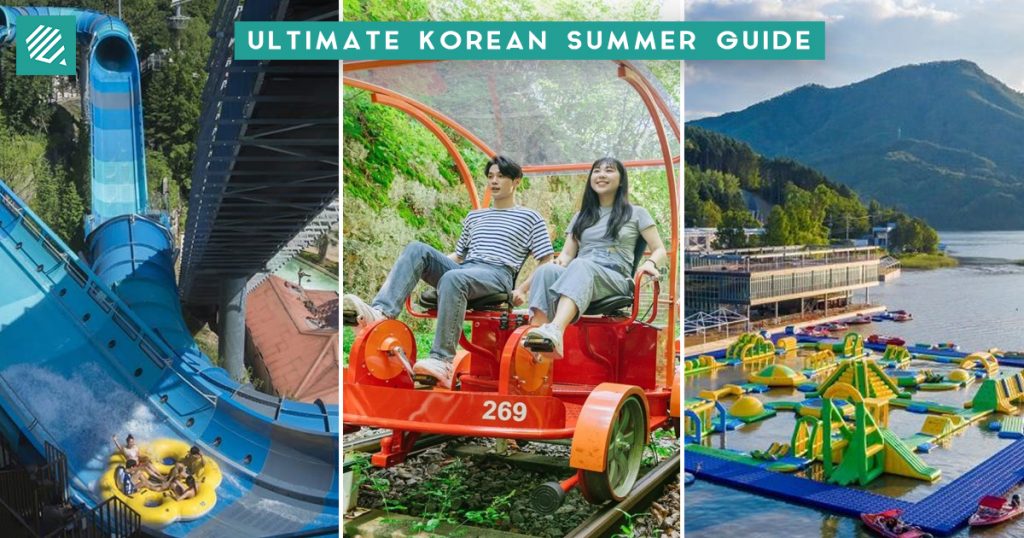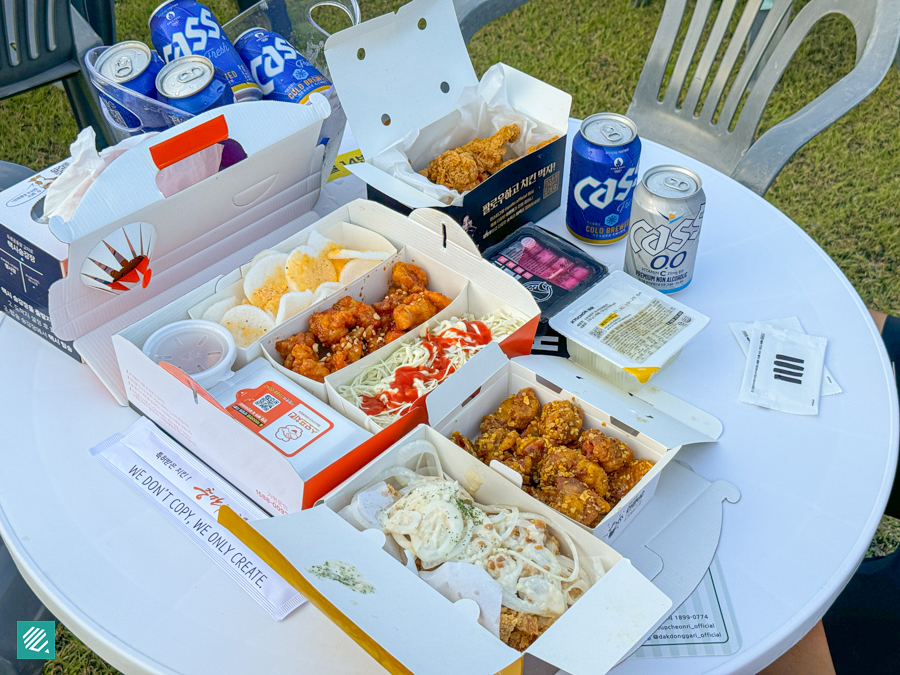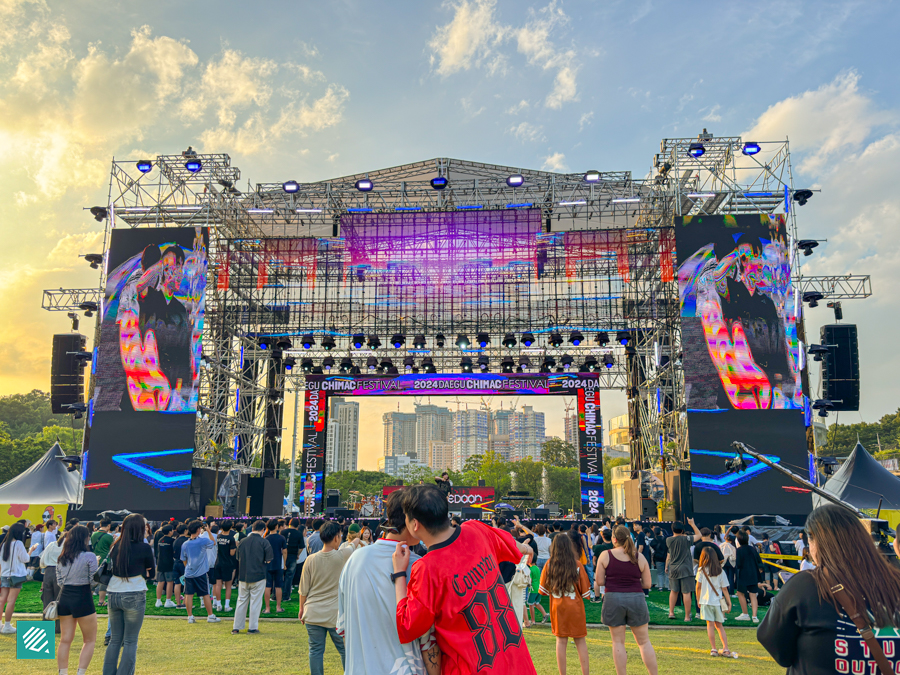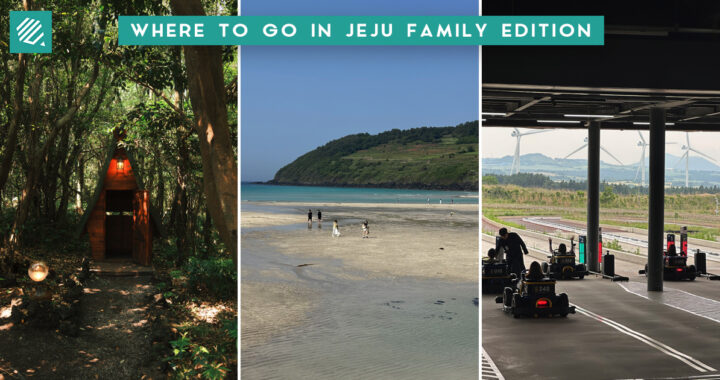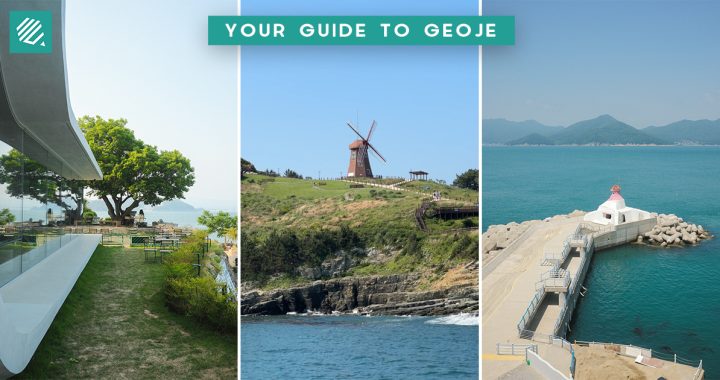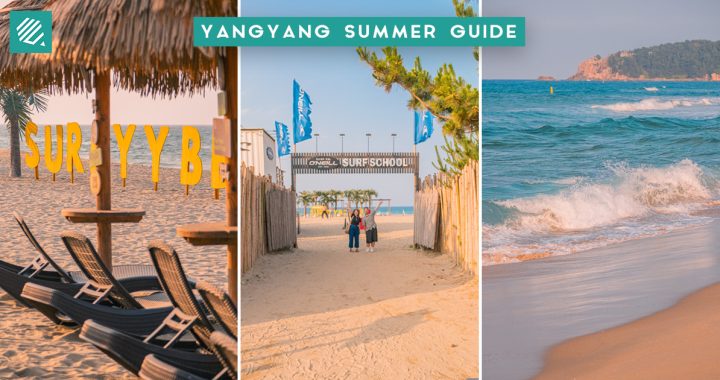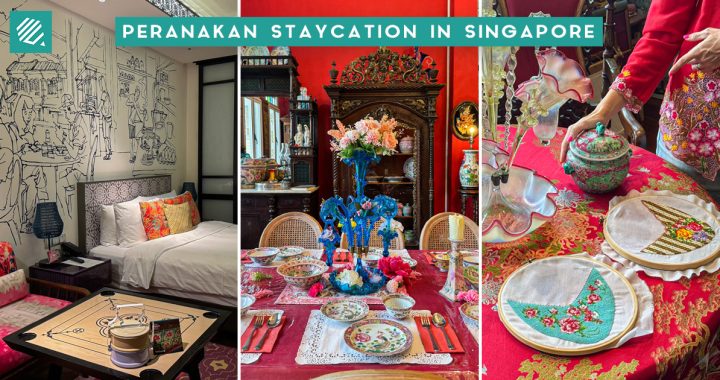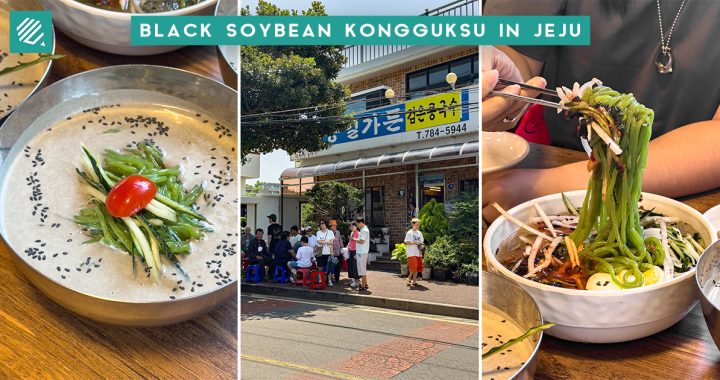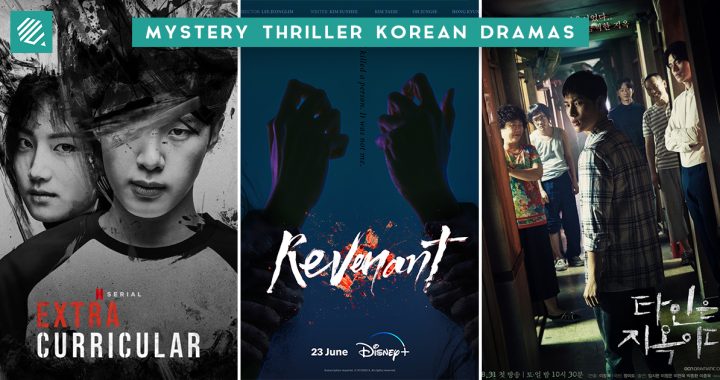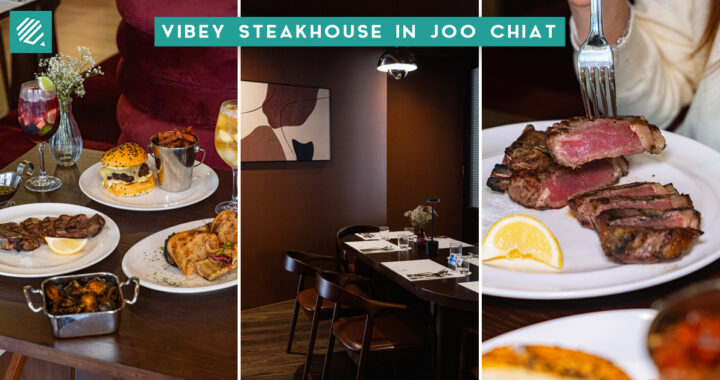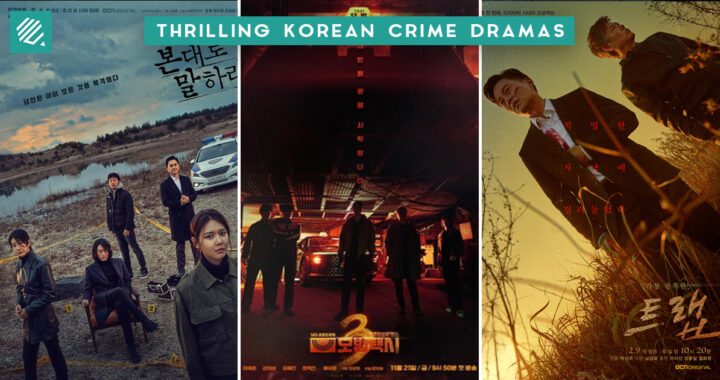The word ‘summer’ is usually associated with the overbearing heat, sweltering sun and an uncomfortable amount of sweat. It’s mostly attributed to the fact we’re in Singapore, where it’s summer all year round! But in South Korea, summer is a time of celebration – the holiday is jam-packed with festivals, summer-only activities and unique summer foods that are meant to complement the season.
So if you’re hesitant about travelling to South Korea during the summer when everyone else goes in autumn or winter, you shouldn’t be!
Here’s our definitive guide to things you have to do in Korea for the summer:
1. Try Korean Summer Foods
The Koreans have perfected the art of chilled noodles and soups that not only keep your body cool but also stimulate your appetite in the sweltering heat. Here are three quintessential Korean summer foods you should try:
Samgyetang

Samgyetang translates directly as Ginseng Chicken Soup. Despite being served boiling hot, its one of Korea’s most popular summer dishes! It is hearty and highly nutritious, packed with ginseng and a whole fresh chicken stuffed with glutinous rice in an earthen clay pot.
While it sounds counterintuitive, it’s a common local practice in Korea called 이열치열 (iyeolchiyeol) – quite literally ‘managing heat with heat’.
It’s believed that by generating more heat to encourage sweat, the body is better able to restore the internal balance of energies and helps boost your overall well-being. Whether you choose to align with this belief or not, Samgyetang is delicious and definitely worth the try. Here are 3 restaurants you can add to your list:
Tosokchon Samgyetang Seoul (토속촌 삼계탕)
This restaurant is one of the most famous and popular soup restaurants in Korea and they add chestnuts into their soup for a unique twist.
Address: 5 Jahamun-ro 5-gil, Jongno-gu, Seoul, South Korea
Operating Hours: 10am to 9pm
Goryeo Samgyetang (고려삼계탕)
Opened in 1960, this is the oldest chicken soup restaurant in Korea, also securing placement on the Michelin list 6 years in a row (from 2017 to 2022).
City Hall Main Outlet:
Address: 55-3 Seosomun-dong, Jung-gu, Seoul, South Korea
Operating Hours: 10.30am to 9pm
Gwanghamun Outlet:
Address: 5-1 Sejong-daero 23-gil, Jongno-gu, Seoul, South Korea
Operating Hours: 10.30am – 9pm (Mon-Fri), 10:30am – 8:30pm (Sat-Sun)
Hosu Samgyetang (호수 삼계탕)
There’s only one item on the menu here and it’s their Samgyetang. Their broth is unique for its thick consistency, which differentiates it from the traditional Samgyetang soups that are more liquid.
Address: 274-1 Dorim-ro, Singil-dong, Yeongdeungpo-gu, Seoul, South Korea
Operating Hours: 11 am to 9pm
Naengmyeon

Another classic Korean summer food is Naengmyeon, literally translated as ‘cold noodles’! The most common is Mul-Naengmyeon, buckwheat noodles with an icy beef broth with cucumbers.
Fun fact, this version has its origins in North Korea (also known as Pyeongyang Naengmyeon), and was popularised during the Korean War.
Other equally refreshing noodle iterations are Bibim-Naengmyeon (with a spicy, tangy sauce), Makguksu, a speciality of Gangwon province with a thicker noodle and Chogye Guksu which features cold chicken broth.
There are shops all over Korea that offer their take on each of these noodles, so if you’re feeling the heat, you can indulge in some refreshing noodles!
Some restaurants you can try:
For Mul-Naengmyeon,
Neung Ra Do
Address: 12 Sanun-ro 32(samsibi)beon-gil, Unjung-dong, Bundang-gu, Seongnam-si, Gyeonggi-do, South Korea
Operating Hours: 11am to 10:30pm
For Chogye Guksu,
If you’re an EXO-L, you’ll be happy to know this place was recommended by EXO member Baekhyun!
Misari Milbit Chogye Guksu 미사리밀빛초계국수 본점
Address: South Korea, Gyeonggi-do, Hanam-si, 덕풍동 38 -3
Operating Hours: 9:30am to 9:30pm
For Makguksu,
Saembat Makguksu
Address: 644 Sinsaembat-ro, Sinbuk-eup, Chuncheon-si, Gangwon-do, South Korea
Operating Hours: 10am to 8.30pm
Konguksu
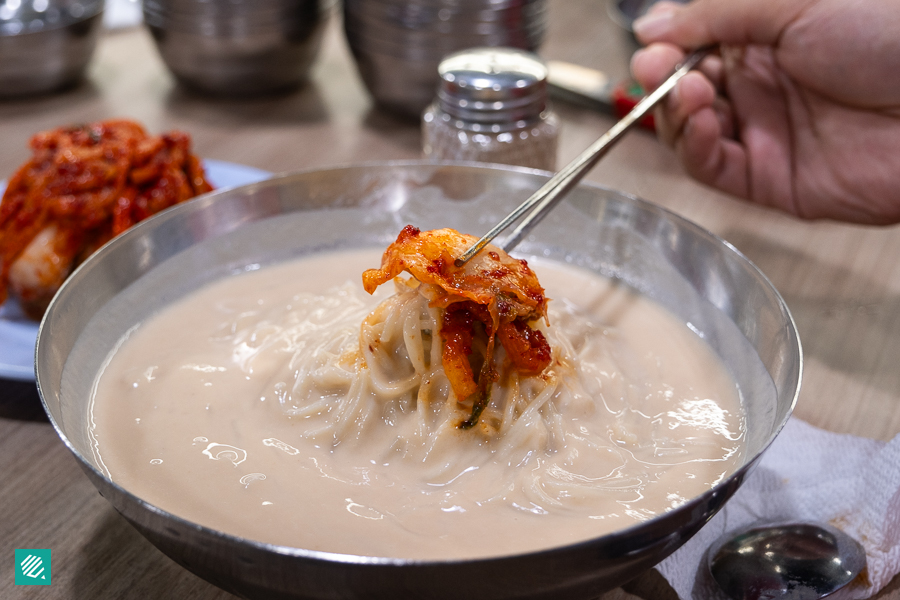
Another summer favourite is Kongguksu, or cold soybean noodles! This refreshing dish features a thick, nutty gravy of ground soybeans and thin wheat noodles.
These are usually served with little-to-no seasoning, so you can add salt or sugar to taste. We recommend pairing it with kimchi if you prefer something heavier!
Jinju House

One of the best konguksu we’ve tried in Seoul is from Jinju House (진주집), an unassuming eatery in the basement of a building in Yeouido. It was rich but not gritty with a pleasant soybean flavour! Big shoutout to their addictive housemade kimchi.
Check out our full review here.
Jinju House (진주집)
Address: B1, 33 Gukjegeumeum-ro 6-gil, Yeongdeungpo-gu, Seoul
Opening hours: Mon-Fri, 10am-8pm, Sat, 10am-7pm, Closed on Sundays
Tongil Garden (통일가든)
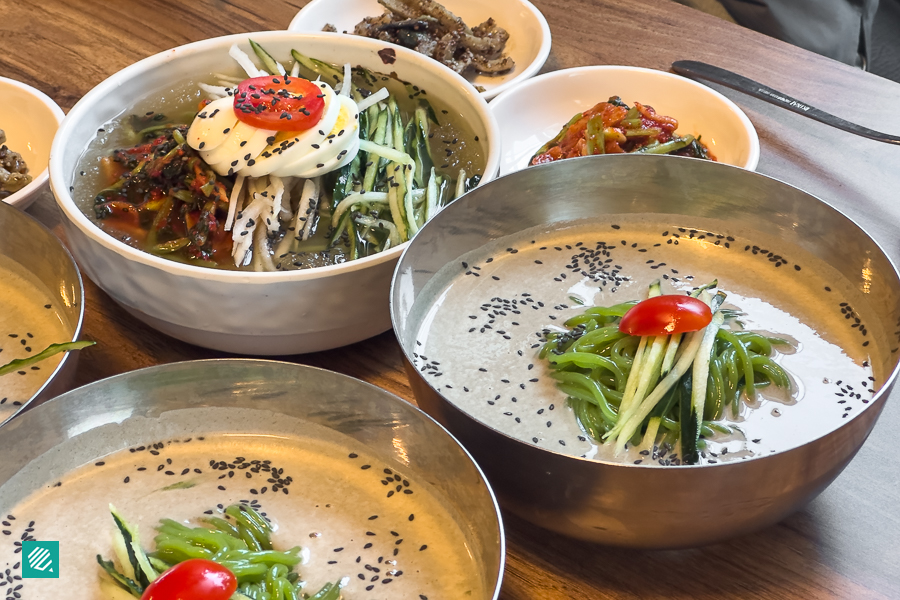
We also found another winning kongguksu, but its in Jeju! This eatery was packed with locals even in the summer heat, all here to enjoy their special Black Soybean Kongguksu (13,000 won).
Their iteration featured chewy noodles made with broccoli leaves, pairing perfectly with the unique nuttiness of black soybean.
Check out our full review here.
Tongil Garden (통일가든)
Address: 14 Jowa-ro, Jocheon-eup, Jeju-si
Opening hours: Wed-Mon, 10:30am to 3pm, Closed on Tuesdays
Bingsu
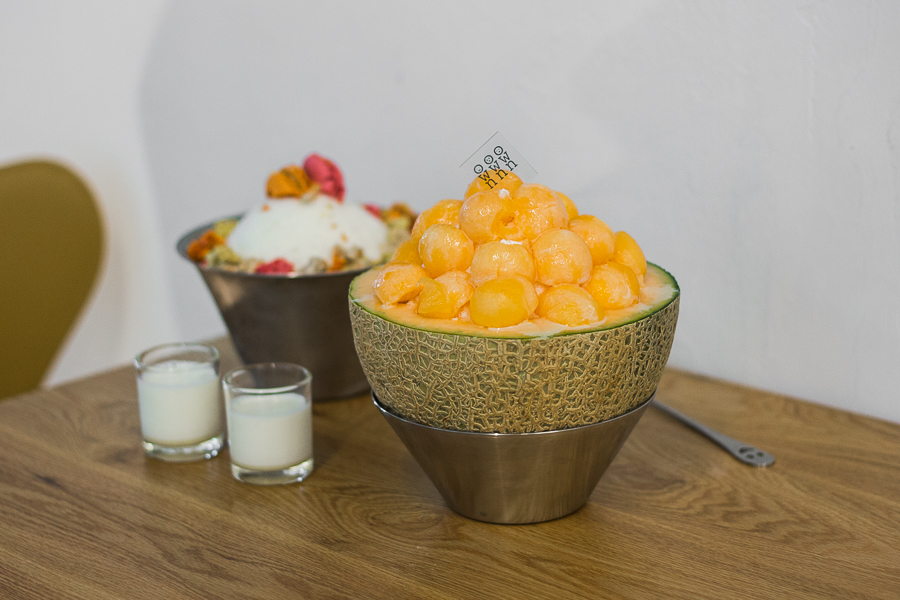
No Korean summer is complete without at least one Bingsu: Korean shaved ice. The OG version is Pat Bingsu, served with sweet red bean paste.
However, they are incredibly innovative with their flavours! You can look forward to seasonal fruits like watermelon and mango, to decadent additions like chocolate and green tea.
Bingsu is commonplace in Korea but here are some places you can start with:
Sulbing
Sulbing is a chain franchise and they have over 490 stores all over Korea, so it’s easy to locate, especially in tourist spots. The address we’ve given is for one outlet in Myeongdong!
Address: 27 Myeongdong 3-gil, Jung-gu, Seoul, South Korea
Operating Hours: 10:30am to 11pm
Namcheon Green Tea Bingsu
This quaint cafe is located in Busan, so it’s a trip away from Seoul, but it’s worth the journey for its famous red bean and green tea Bingsu!
Check out our review here.
Address: 28 Suyeong-ro 394-gil, Suyeong-gu, Busan
Operating Hours: 10.00am to 10pm
Rafre Fruit
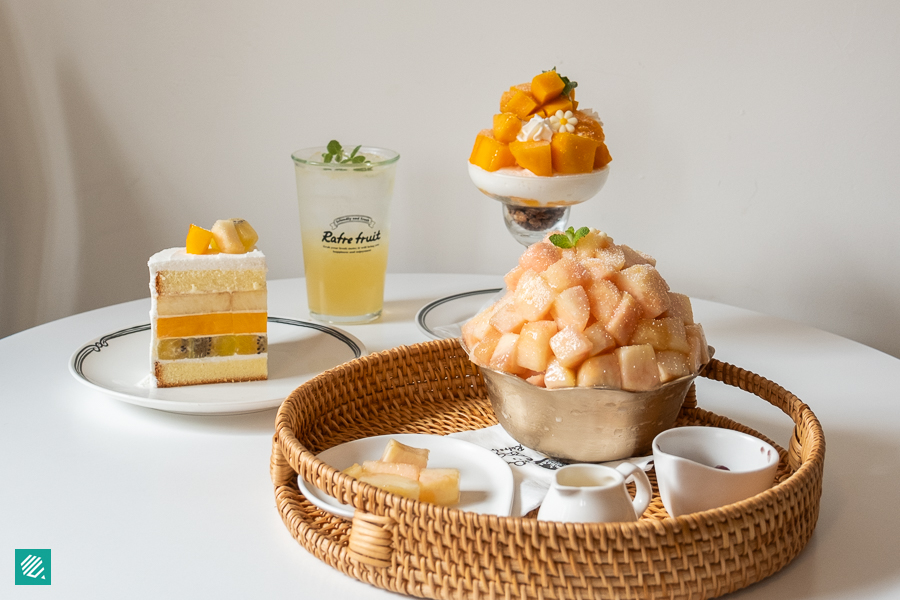
Rafre Fruit is a popular dessert cafe famous for their seasonal fruit bingsu. When we visited, we got to try a Jeju Apple Mango Bingsu (49,900won) and Peach Mango Bingsu (39,800won), both piled high with cubes of fresh, sweet fruit.
The prices are steep but you get a lot of premium ingredients. It’s best shared amongst 2 to 3 people!
Check out our full review here.
Rafre Fruit Seochon (라프레플루트 서촌)
Address: 53-30 Pilundaero, Jonggu-ro, Seoul
Opening hours: Mon-Sat, 1pm-7pm, Closed on Mondays
2. Plan A Summer Trip
While Seoul is a beautiful city, Korea has so much more to offer! We recommend travelling out of Seoul to experience the unique cultures and landscapes of the surrounding regions, which house many exciting summer activities:
Go Camping & Glamping
Glamping, a combination of the words ‘glamorous’ and ‘camping’, is popular amongst Korean locals. Instead of the dirt and mess that comes with conventional camping, glamping promises comfort and aesthetics with well-decorated glamping grounds and modern amenities still within nature.
Korea boasts plush natural landscapes that are perfect for glamping trips. If you’re looking to plan one, you can consider these places:
Nanji Hangang Park (Seoul)
Located along the Han River in Seoul, Nanji Hangang Park is the largest camping site in Seoul with a capacity of up to 2,000 people (or 165 campsites!). The space offers different tent sizes for rental on top of 24-hour shower rooms, BBQ pits, and even an exciting array of activities like BMX, a riverside swimming pool, and inline skating!
You can rent tents for between 6,000 won to 50,000 won depending on the size of your party.
Address: 487-257 Sangam-dong, Mapo-gu, Seoul
Hours Of Stay: 11am-10am (The Next Day). Check-in begins at 10.30am.
Admission Fees: No Admission Fees, Facility Usage Fee ranges from 5,000 won to 100,000 won depending on the services used
Reservation available online at hangang.seoul.go.kr, or take a look at the rough estimates for tent rental and maintenance costs online.
Starlight Sea Pension & Glamping (Chungcheongnam-Do)
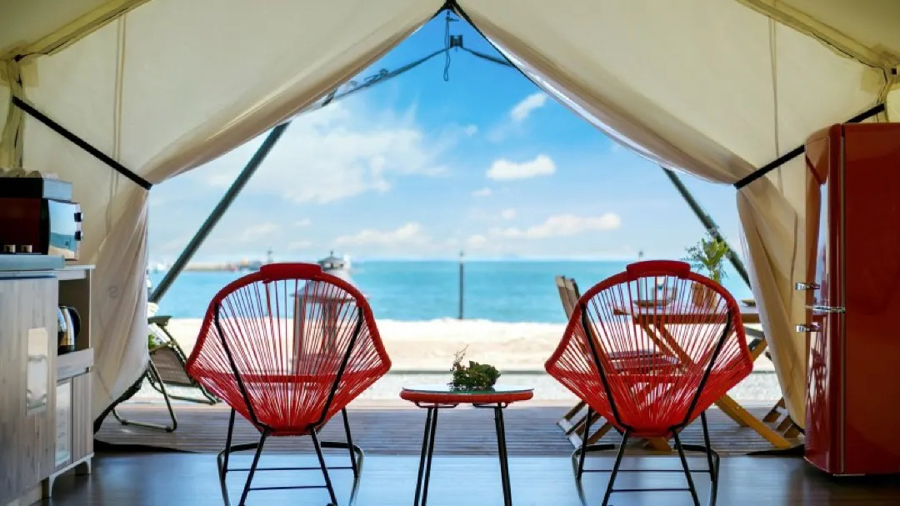
This glamping site is located in Chungcheongnam-do, the Southwest-most province in Korea. It sits right at Hakampo Beach, boasting a stunning seaside view! Soak in the beachside while lounging in their luxury glamping cabins equipped with air-conditioning, a fully functioning kitchen, and private bedrooms.
The cost of the glamping cabins ranges from 99,000 won to 639,000 won and you can rent other items like a BBQ pit and firewood.
Address: 21-37, Hakampo-gil, Wonbuk-myeon, Taean-gun, Chungcheongnam-do
Hours Of Stay: Check in 3pm, Check out 11am the next day
Admission Fees: 25,000 won (Adults and children over 8), paid on-site
Reservation online at http://starocean.kr/html/reserve.php?cate=01.
Sanjeong Lake Glamping (Pocheon)
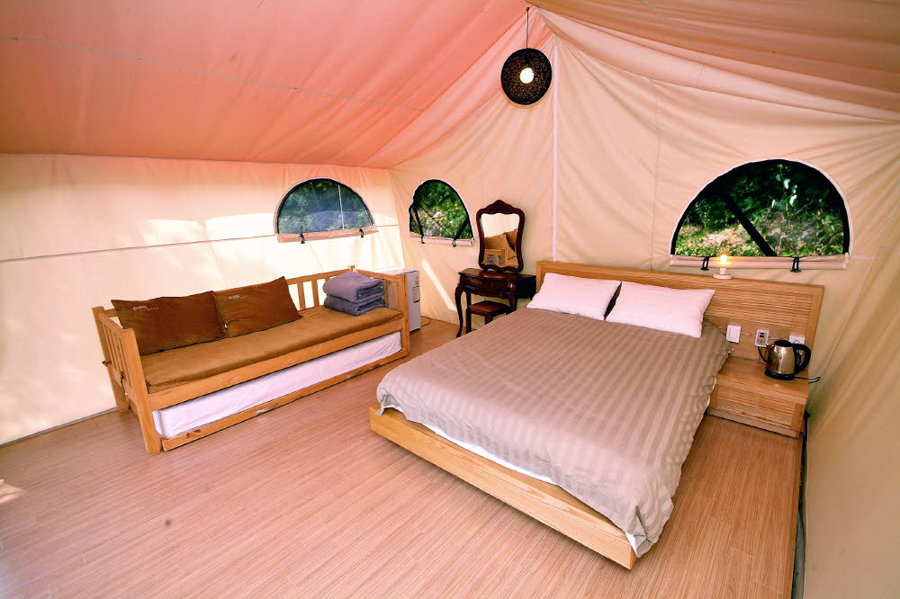
Located in Pocheon, this glamping site sits near Pocheon’s famous natural attractions, including Nakcheonji Falls, Myeongseongsan Mountain views, and Jainsa Temple. You can enjoy fully equipped rooms with facilities like a fridge, Wi-Fi, and private decks.
Because of its proximity to so many activities, you can spend the day exploring the nature trails or dip in the swimming pool. Take a peek at how the rooms look online. Each room is based on a minimum occupancy of 2 people and a maximum of 4.
Address:361-2 Sanjeong-ri, Yeongbuk-myeon, Pocheon-si, Gyeonggi-do
Hours Of Stay: Check in 2pm, Check out 11am the next day
Admission Fees: Varies depending on the reservation calendar.
Reserve a cabin via their official website or Agoda.
Take A Trip To Gapyeong
Gapyeong is a city located in Gyeonggi-Do, a province only about an hour away from Seoul. The proximity makes it a popular summer destination for locals, similar to how Johor Bahru is to us Singaporeans. You can take the ITX train from Yongsan Station in Seoul to get here.
If you’re thinking of what to do here, Gapyeong is famous for hosting a few popular tourist spots like:
Garden of Morning Calm
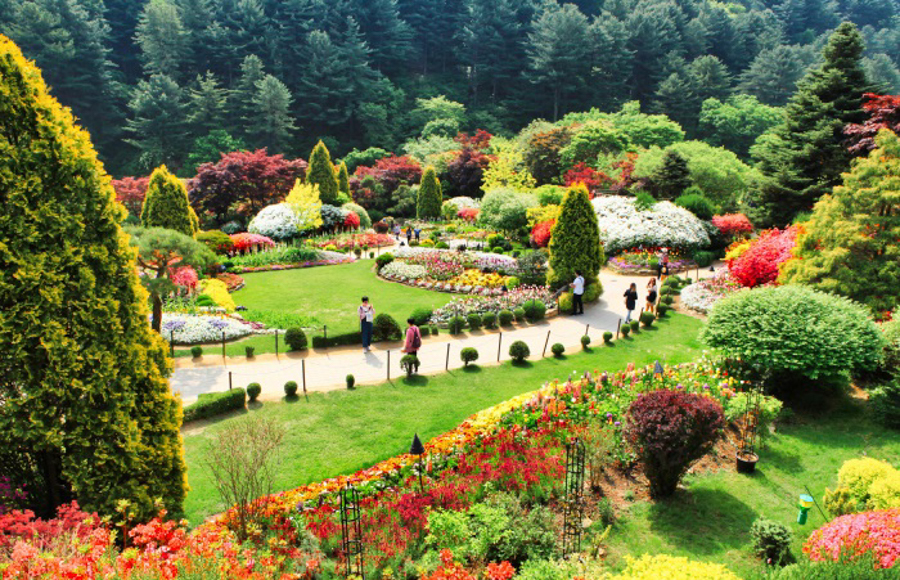
One of Korea’s most popular gardens, the Garden of Morning Calm is filled with plants and flowers that change with the seasons. It hosts many festivals and exhibitions each season to celebrate the flora, making for many dreamy, Howl’s Moving Castle-esque photo opportunities.
In the summer, check out festivals like the Iris Festival (early May to June), the Hydrangea Festival and Exhibitions (July) or the Rose of Sharon Festival and Exhibition (Late July to August), showcasing the blooms of over 250 varieties of roses atop the Sharon Hill.
Garden of Morning Calm is also located within Nami Island and near Petite France, making it a good pitstop or starting point to explore Gapyeong.
To get here, you can take the Gapyeong City Tour bus from Cheongpyeong Terminal, or take an intra-city bus from the Cheongpyeong Subway Station. More details can be found on their official website.
Address: 432 Sumogwon-ro, Sang-myeon, Gapyeong-gun, Gyeonggi-do
Opening Hours: 8.30am to 7pm
Admission Fees: 11,000 won (Adults), 8,500 won (Youth), 7,500 won (Child)
Tickets can be purchased on-site.
Water Leisure V
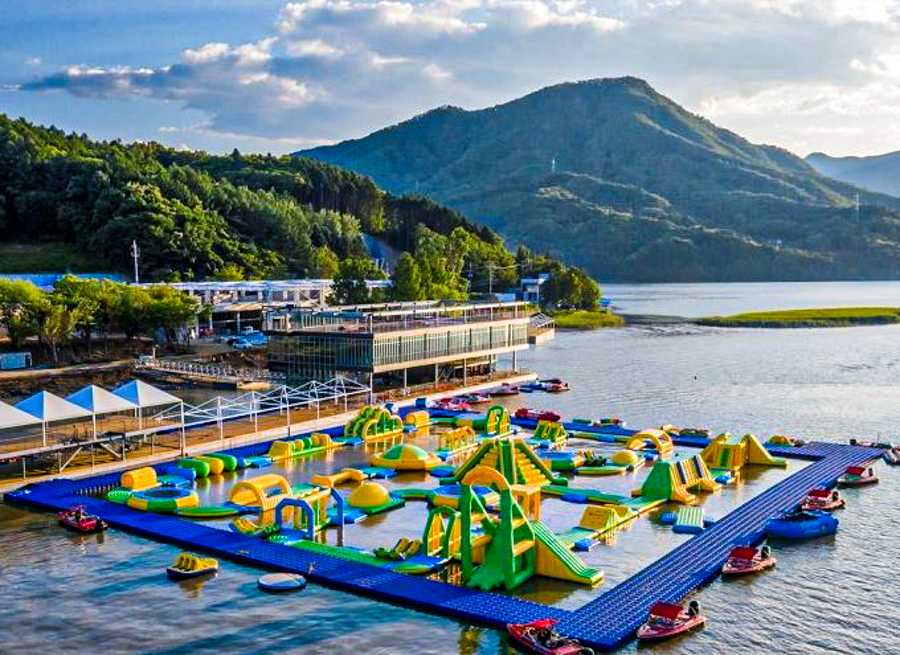
Gapyeong also houses a lot of water parks, but one of its most famous has to be Water Leisure V (수상레저(V)브이), which you might have seen on a lot of Korean variety shows like Running Man and Infinity Challenge.
The place boasts a huge inflated water playground with motorized activities like banana boat and wakeboarding, water slides, plus the ever-famous Blob Jump! You can see it in action here:
You can experience these in passes and packages, ranging from just the entry ticket to a 2D1N package. Various websites offer day trips to the location, such as this one from OneDayKorea. The entire compound is equipped with locker rooms, shower facilities, and even a convenience store, so you spend more time playing on the water without worrying about your items.
To get here, you can either take a taxi from Gapyeong station or make arrangements with the agency you got your package from. More information can be found here.
Address: 487 Bangha-ro, Namsan-myeon, Chuncheon-si, Gangwon-do
Opening Hours: 9am to 6.30pm
Admission Fee: Depending on the package you take
Gangchon Rail Park
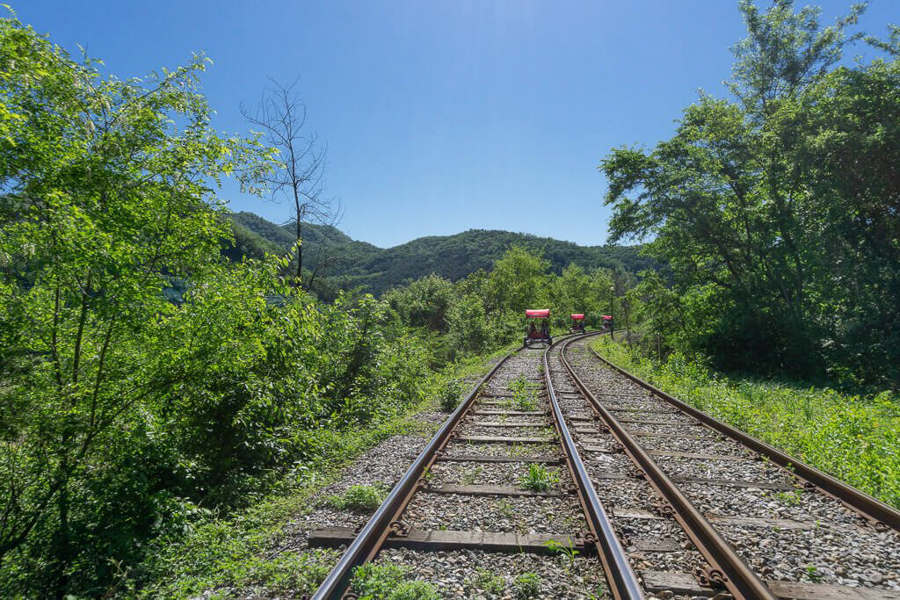
If you prefer a scenic route, try the Gangchon Rail Park. Its part of the now-defunct Gyeongchun railway that ran for over 70 years, and transformed into three different rail routes that surround the stunning Bukhan River.
Some of its grounds, like the Gyeong-gang train station, have been featured in popular K-dramas like The Letter (1997) and Doctors (2016) which add to its fame. The mode of transportation is a mini 2 or 4-seater rail train that you manually power by paddling, so expect to ride over bridges, through tunnels, and enjoy the beautiful mountain scenery.
The longest route is the Gimyujeong route which spans about 8.5km with a rest stop called Nanggu Village. You can opt for the two shorter, round-trip routes: the Gyeong-Gang route or Gapyeong route. Both routes start at the respective train stations (Gyeong-gang and Gapyeong) and cross the 30m high Bukhan River Railway Bridge, where you can enjoy a view of the water.
Whichever route you choose, it’s a bit of a workout but the payoff comes in the guaranteed picturesque views! For more information on the routes and how to get here, check the official online site.
Address: 1383, Gimyujeong-ro , Sindong-myeon, Chuncheon-si, Gangwon-do
Opening Hours: 9am to 5.30pm
Admission Fee: 35,000 won for a 2-seater, 48,000 won for a 4-seater
Tickets available at their official website, or via Klook or Trazy.
3. Hit The Korean Water Parks
Cool yourself down in one of Korea’s water parks! They have some of the largest water parks in the world, complete with resorts, rides, and hot springs for maximum enjoyment. You can add these to your list:
Caribbean Bay Water Park (Gyeonggi-Do)
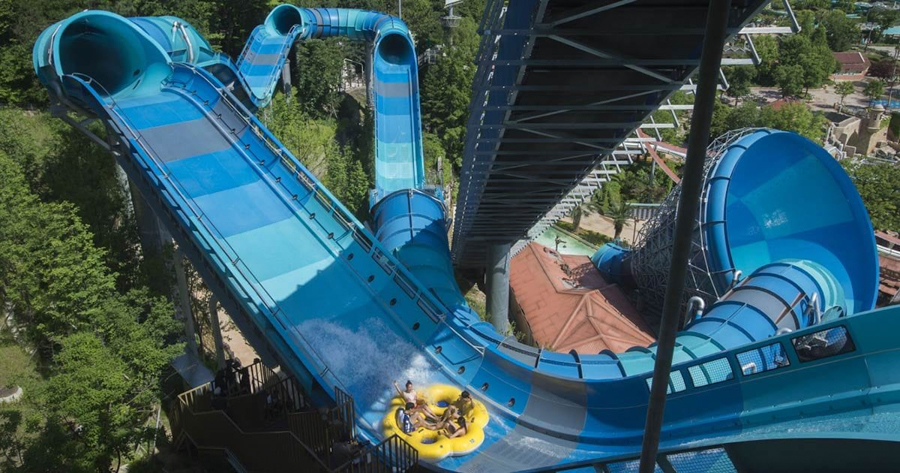
Located right beside Everland Theme Park, Caribbean Bay Water Park is one of the largest water parks in the world, offering over 20 rides including spas and leisure activities. Try rides like the Mega Storm, a 355-meter long and 37-meter-high water slide complete with twists and turns, or the Tower Boomerang Go, where you swing between two 19-meter peaks.
If you’re not into heights, you can opt to cruise along the 550-meter River Way or make a splash in the Indoor Wave Pool. The entire water park is also family-friendly with dedicated kiddie spaces for children, making it great for family trips!
Ticket prices range from 49,000 won (Afternoon only) to 74,000 won (Full day) depending on the season. The water park is also easily accessible via its own shuttle buses or public transport. For more information on ticket bookings and how to get here, you can check out their official website.
Address: 199 Everland-ro, Pogog-eup, Cheoin-gu, Yongin-si, Gyeonggi-do
Opening Hours: Can vary depending on the day, best to check the website to check operating hours for the day
Admission Fee: Ranging from 30,000 won to 74,000 won, depending on the season and time chosen
Exact pricing and tickets are available online at their official website.
Ocean World Water Park (Gangwon)
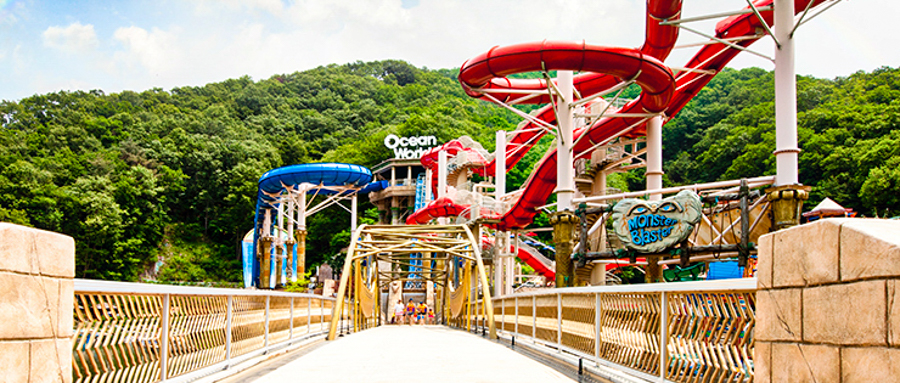
Ocean World Water Park is ranked as Korea’s number 1 water park for good reason! Its large Egyptian-themed expanse houses 4 different zones – Dynamic Zone, Indoor Zone, Mega Slide Zone and Extreme Zone – each with its own activities designed to meet the needs of everyone.
You can go rafting in the Super Extreme River with a current generated by 150 tons of water pumped through flood gates and slide down the Monster Blaster, the world’s first and longest (300m) 3-seater tube slide.
Not up for a challenge? Enjoy swimming in the Indoor Zones with indoor pools or unwind in their jjimjilbangs (Korean traditional spas) ranging from saunas to full spa sessions.
Like Caribbean Bay, tickets are tiered by seasons and duration of stay and range between 35,000 won to 50,000 won for adults and children. Prices vary depending on the season and day, so its best to head over to their official site to find out more.
Address: 262 Hanchigol-gil, Seo-myeon, Hongcheon-gun, Gangwon-do
Opening Hours: 9am to 6.30pm
Admission Fee: Ranging from 35,000 won to 50,000 won depending on season
Exact pricing and tickets available online at their official website, or via Tripadvisor and Klook.
Gimhae Lotte Water Park (Busan)
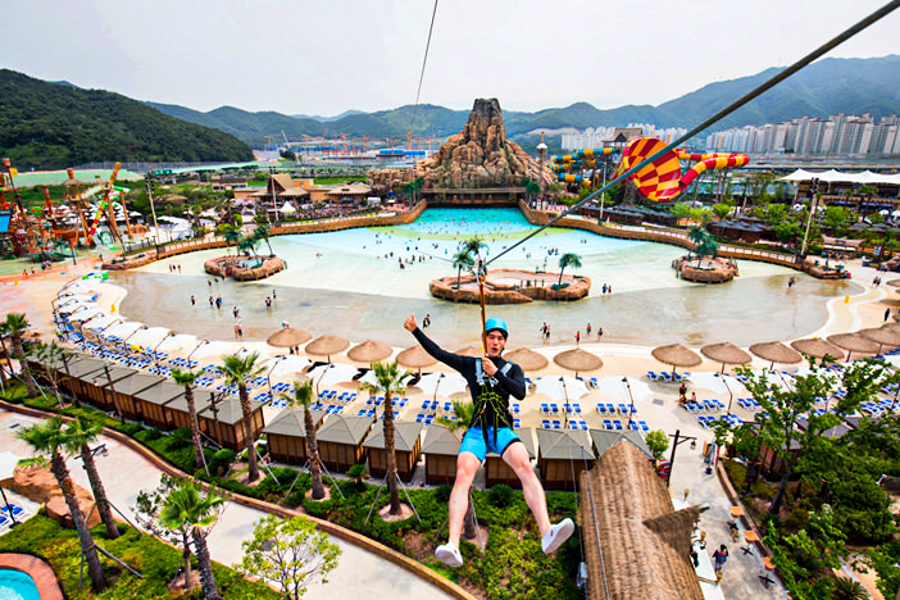
Step into the Polynesian-themed Gimhae Lotte Water Park which boasts an extensive list of indoor and outdoor water rides! If you’re a thrill seeker, you can race your friends on the 19-meter high, 120-meter-long Race Slide, go surfing at Wild Surfing and face the Giant Wave, Korea’s third largest wave pool.
There are plenty of indoor rides like the Tiki Aqua Flex, the largest indoor water play area in Korea. You can also unwind at their Tiki Island Spa which has a sauna, jjimjilbang, and even an outdoor spa!
Tickets range from 30,000 won to 46,000 won depending on the duration of your stay. As this water park is located in Busan, transportation is accessible via the local subway and bus lines. For more information, you can visit their official website.
Address: 262 Hanchigol-gil, Seo-myeon, Hongcheon-gun, Gangwon-do
Opening Hours: 10am to 6.00pm
Admission Fee: Ranging from 30,000 won to 46,000 won
Exact pricing is available online at their official website.
4. Visit The Beaches
Summer is not complete without a trip to the beach. Luckily, Korea has quite a few beaches that you can visit, most notably in Busan!
Haeundae Beach and Gwangalli Beach (Busan)
View this post on Instagram
Haeundae beach is one of Korea’s most famous beaches, lining Busan’s commercial Haeundae district with clear waters and soft sand. It’s open all year round and hosts many festivals including the annual Haeundae Sand Festival which falls around May to June.
The beach is also part of the Haeundae Special Tourist Zone that includes other attractions like the SEA-LIFE Busan Aquarium and a walking trail along the coastlines, so there’s no shortage of things to do!
You can also consider heading to Gwangalli Beach, which is opposite Haeundae Beach. At sunset, the unobstructed views are picturesque and worth staying for.
Address: 264, Haeundaehaebyeon-ro, Haeundae-gu, Busan (Haeundae Beach)
219, Gwanganhaebyeon-ro, Suyeong-gu, Busan (Gwangalli Beach)
Opening Hours: 9am to 6pm
Admission Fee: Free
Eurwangni Beach (Incheon)
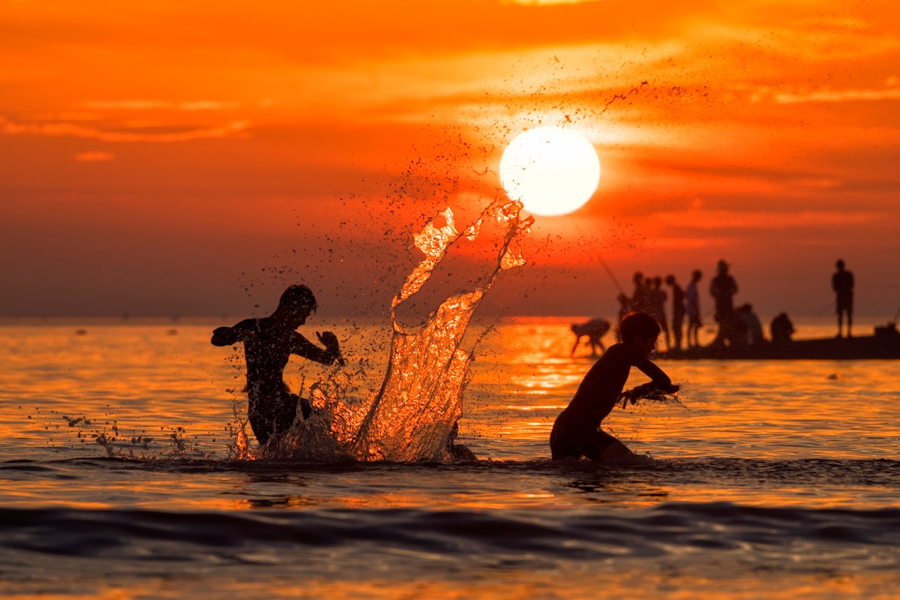
As the name suggests, Eurwangni Beach is located in Incheon, near the Incheon International Airport. It’s a smaller beach at 700 meters with an average depth of only 1.5 meters, but it boasts a naturally curved coastline, pine forests, and nice sunsets that make it popular with locals.
It’s a dedicated National Tourist Site and has activities like banana boating and jet skiing to keep you occupied!
You can get here from Seoul via the Incheon Bridge or Yeongjong Bridge, or you can take the bus services 111 or 306 from Incheon Airport.
Address: 16-15, Yongyuseo-ro 302beon-gil, Jung-gu, Incheon
Opening Hours: 24 hours
Admission Fee: Free
Outdoor Swimming Pools (Seoul)
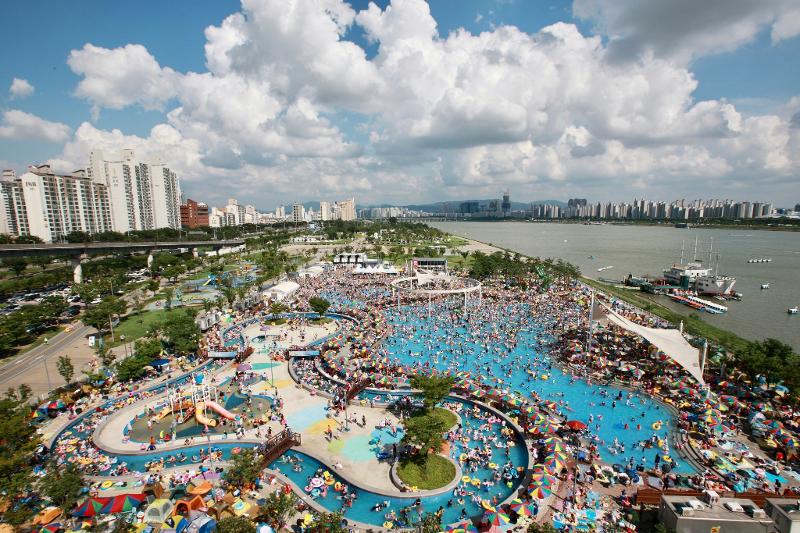
If you’re without time to go to the beach or coastal areas, you can opt for visiting the Hangang River Park outdoor swimming pools instead. These are only available in the summer season from June to August, making them a limited-time Korean summer activity in Seoul.
Four Han River parks open outdoor swimming pools: Ttukseom, Yeouido, Gwangjang Naru, and Jamwon, all offering an exciting lineup of water slides, fountains, and even a swirling vortex tunnel.
You can easily choose which pool to go to depending on your preference, as all of them are within walking distance of a subway station. All swimming pools follow the same pricing for admission: 5,000 won for Adults, 4,000 won for Teenagers and 3,000 won for Children.
Ttukseom Outdoor Swimming Pool
Address: 139, Gangbyeonbuk-ro, Gwangjin-gu
Opening Hours: 9am to 7pm
Subway station: Ttukseom Resort Subway Station, exit 2 & 3
Yeouido Outdoor Swimming Pool
Address: 330, Yeouidong-ro, Yeongdeungpo-gu, Seoul
Opening Hours: 9am to 7pm
Subway station: Yeouinaru Subway Station, exit 2 or 3
Gwangjang Naru Outdoor Swimming Pool
Address: 319 Cheonho-dong, Gangdong-gu, Seoul
Opening Hours: 9am to 7pm
Subway station: Cheonho Subway Station, exit 1. A 10-minute walk from the station.
Jamwon Outdoor Swimming Pool
Address: 221-124 Jamwon-ro, Seocho-gu, Seoul
Opening Hours: 9am to 7pm
Subway station: Sinsa Subway Station, exit 5 or 6
5. Attend Korean Summer Festivals
To top off our list, you can participate in a variety of Korean Summer festivals! Each region of Korea has its version of these festivals, celebrating a unique part of their local culture. While many of them have ended at the time of writing, the activities are still worth a mention in preparation for next year’s editions! Here are a few we recommend:
Daegu Chimaek Festival (Daegu)
Calling all fried chicken and beer lovers! The Daegu Chimaek Festival is a must-visit summer event happening every July where you can indulge in chimaek (chicken + maekju/beer). You can expect booths from major chicken brands, beer on tap, live music, performances, and a fun party atmosphere that runs late into the night.
For the variety of activities and affordable prices, this is definitely worth the visit if you’re dropping by Daegu in the summer!
Address: 대구 달서구 공원순환로 36, Duryu Park (두류공원)
Nearest train station: Duryu (두류역, Line 2 Exit 14)
Operating Hours: 18:00 – 23:00
Admission Fee: Free (fees may apply to certain programs)
More information can be found online, and tickets can be purchased via Klook.
Waterbomb Festival
View this post on Instagram
Get soaked and party hard at Waterbomb Seoul, Korea’s wildest summer music and water festival! Expect massive water gun battles, endless splashes, and insane performances by top K-pop, hip-hop, and EDM artists like 2NE1, Jay Park, Kiss of Life, and more. The Waterbomb Festival takes place in various cities across South Korea. In 2024, the festival was held in Seoul, Jeju, Daegu, Busan, Incheon, Daejeon, Sokcho, and Suwon!
Address: Seoul (and more)
Operating Hours: TBC (check official site)
Admission Fee: Starts from ₩99,000
Get tickets via Waterbomb official website
Boryeong Mud Festival (Chungcheongnam-Do)
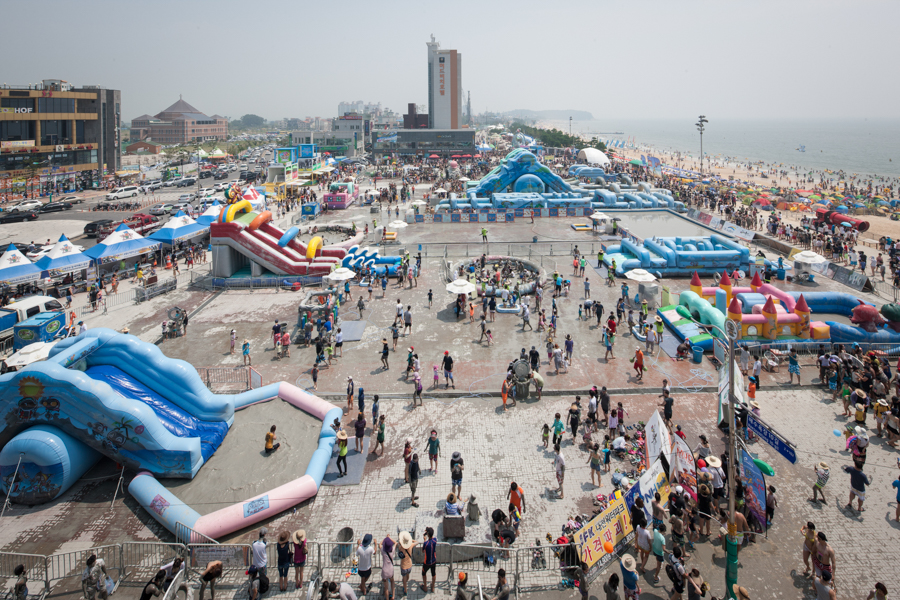
You heard that right! Embrace the mud at the Boryeong Mud Festival, one of the area’s biggest and most famous celebrations. Held between July to August annually, the festival promises a lineup of exciting activities like fireworks, live performances, and busking.
The mud in Boryeong is from Daecheon beach, and is known to be full of benefits, including anti-aging and healing effects. The festival usually takes place around end-July every year, for more information, you can visit the official website.
Address: Sinheuk-dong, Boryeong-si, Chungcheongnam-do
Operating Hours: 9.30am to 6pm
Admission Fee: Free, but with extra fees for each activity
Get the tickets on their official website. Usually, third-party websites like Trazy also offer packages for the mud festival.
Hangang River Festival (Seoul)
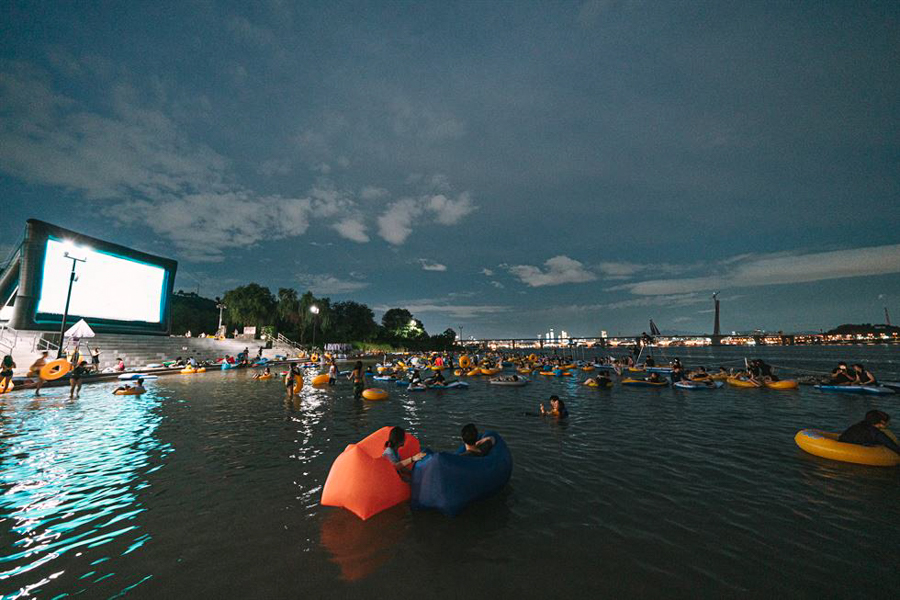
The Hangang River Festival promises 18 days of creative fun that maximizes the vast expanse of the 11 Han River Parks. You can do activities like water sports, arts, and performances as well as cultural exhibits highlighting Korean culture.
Some highlights of this year include a Hangang PET Boat race, where participants float on boats made with recycled bottles, a romantic Hangang Night Walk, and an outdoor Hangang Movie Night!
Address: Jamsil Park, Tteukseom Park, Yeouido Park, Banpo Park
Operating Hours: Dependent on the activities
Admission Fee: Free, but with extra fees for each activity
Purchase tickets on-site at the Hangang River Festival.
Pocheon Herb Island Lavender Festival (Gyeonggi-do)
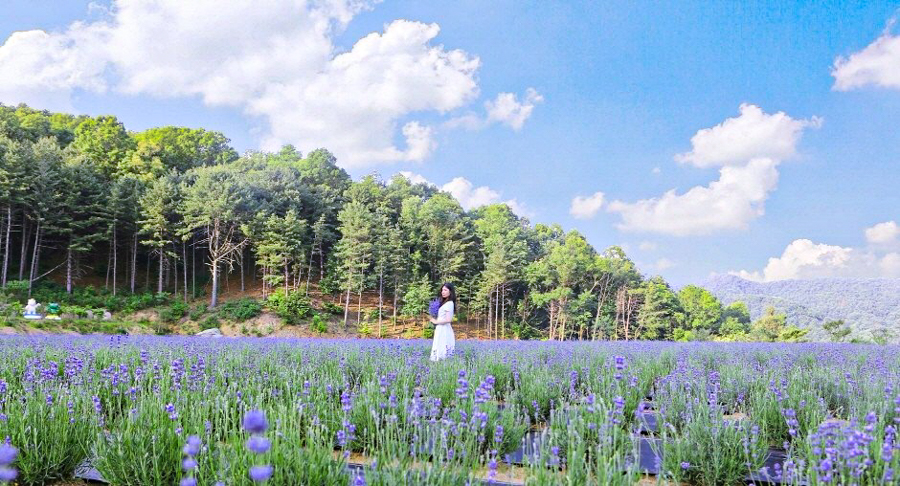
Running through a field of fresh, purple lavender sounds like a dream – you can do exactly that at the annual Pocheon Herb Island Lavender Festival! In celebration of the blooms, this festival celebrates the humble flower.
Check out limited edition lavender lattes and ice cream, a tractor ride around the lavender fields, and exclusive lavender merchandise like dried lavender flowers and scented candles. However, Herb Island itself continues to remain open the rest of the year for other festivals if you’re interested in visiting! Learn more about Herb Island here.
If you’re interested in visiting Pocheon during other seasons, Klook has a one-day tour that includes Herb Island and other attractions in Pocheon!
Address: 51, Cheongsin-ro 947beon-gil, Sinbuk-myeon, Pocheon-si, Gyeonggi-do
Operating Hours (Herb Island): 10am to 9pm (Weekdays except Wednesday), 10am to 10pm (Saturday), 10am to 10pm (Sunday)
Admission Fee: 10,000 won (Weekdays, Adults 17 and Above), 12,000 won (Weekends, Adults 17 and Above)
Ticket prices vary for children, senior citizens, and infants, so check out Herb Island’s website for more detailed information.
Purchase tickets on-site at Herb Island.
Bonghwa Sweetfish Festival (Gyeongsang-do)
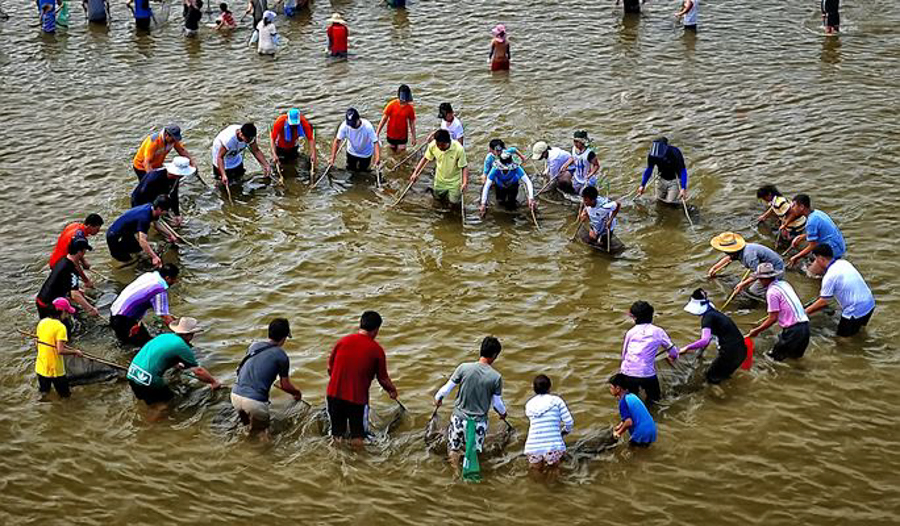
Sweetfish is a local specialty and pride of the Bonghwa region. Held annually from July to August, the Bonghwa Sweetfish Festival holds a whole lineup of events to celebrate this fish. There’s a Sweetfish food market, photography exhibitions, live performances, cultural tours, and even a whole segment where you get to go into the water and catch the sweetfish yourself!
Learn more about the Bonghwa Sweetfish Festival here.
Address: The full regions along Naeseong-ri, Bonghwa-gun, and Gyeongsangbuk-do
Operating Hours: Depending on the activities
Admission Fee: Free, but with extra fees for each activity
Get tickets online via KKday.
6. Hike A Mountain in Korea
Looking for a free and easy way to enjoy Korea’s nature? Hiking is one of the most popular local pastimes with well-marked trails, scenic views, and routes suitable for all fitness levels! If you’re new to hiking, don’t worry — there are plenty of beginner-friendly trails, each offering beautiful views without intense climbs.
Here are a few we recommend:
Achasan Mountain
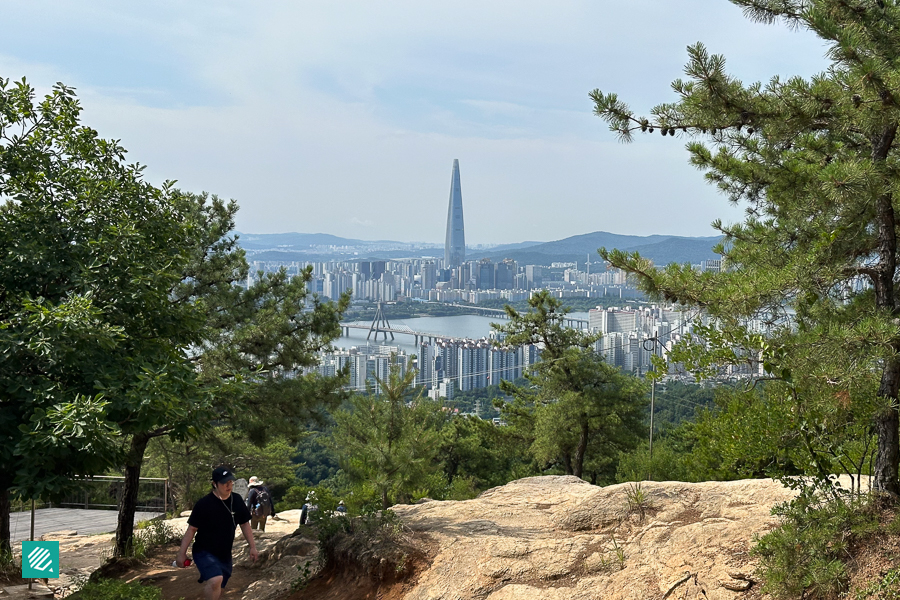
If you’ve never hiked a mountain before but want to enjoy a panoramic view of Seoul’s cityscape, Achasan is one of the easiest mountains to hike. The trail is gentle and relatively short, making it ideal for first-timers.
From the summit, you’ll be rewarded with gorgeous views of the Han River, Lotte World Tower, and even parts of Gwangnaru and Seoul Forest on a clear day. Achasan hikes range between 4–6 km, with most routes taking 1.5–2.5 hours.
Address: Achasan Management Office 아차산 관리사무소: 서울 광진구 영화사로 135 | 135 Yeonghwasa-ro, Gwangjin-gu, Seoul
Operating Hours: Open 24 hours
Admission: Free
Inwangsan Mountain
View this post on Instagram
Located near Gyeongbokgung Palace, the Inwangsan trail offers views of Namsan Tower and the Seoul skyline. The hike isn’t too difficult, but the steep steps, especially near the summit, can be a bit challenging. The trail is around 2.5 km total, typically taking 1–1½ hours.
Address: 29, Inwangsan-ro 1-gil, Jongno-gu, Seoul
Operating Hours: Open 24hrs and night hiking is permissible except, closed to all hiking on Mondays. If Monday is a Public Holiday, closed on Tuesday instead.
Admission: Free
Bukhansan National Park
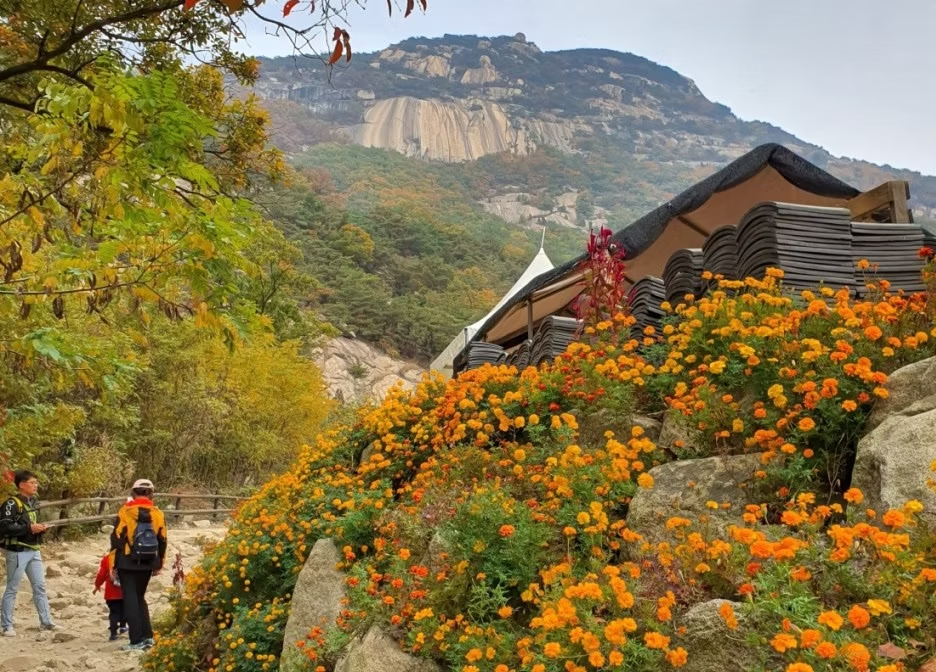
Drawing nearly five million visitors annually, Bukhansan National Park is renowned as one of Korea’s top hiking spots, and perhaps Seoul’s most beloved mountain. Bukhansan offers a range of trails for everyone.
From easy walks to expert-level climbs, the park caters to both seasoned hikers and casual day-trippers! The trails are around 6 km (2–3 hrs) to 10–14 km (4–6 hrs or more) depending on route and difficulty.
Address: 262 Bogungmun-ro, Seongbuk District, Seoul, South Korea
Operating Hours: Summer Season (Apr-Oct) – 4:00 to 17:00, Winter Season (Nov-Mar) – 4:00 to 16:00. Hiking at night is prohibited
Admission: Free
Enjoy a Memorable Summer in Korea!
These activities are only a few of the many that Korea has to offer, but we highly recommend that you try them if you have the time! Don’t be afraid to head out of Seoul and give these summer activities a try when you’re in Korea!
Sign up to get a 3 month premium trial with Revolut, where you’ll get to exchange 33+ currencies at great rates! Join Now. T&Cs apply.
*Follow MiddleClass.sg on Facebook, Instagram, and Telegram for more food, travel, and trending stories!

